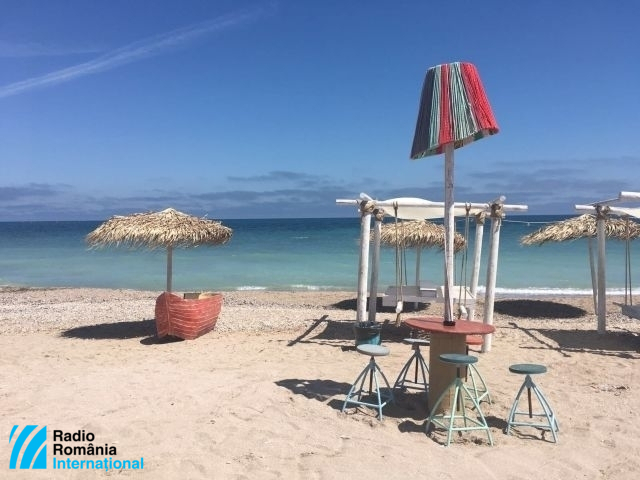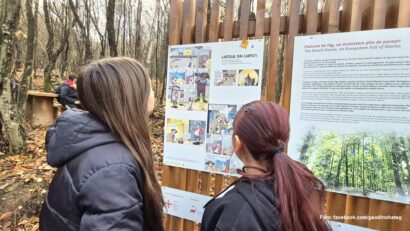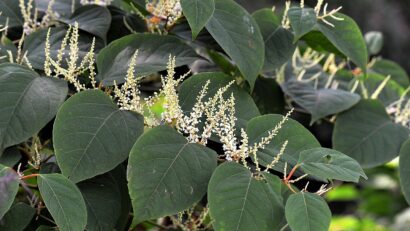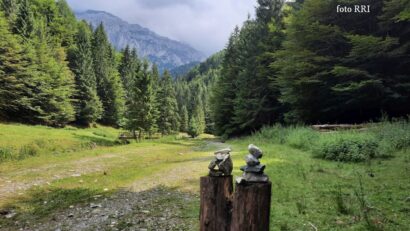Artificially widened beaches in Romania
Extensive works have been carried out on the Romanian Black Sea coast in the last ten years, to widen the beaches, after they suffered a slow but continuous process of erosion

Eugen Coroianu, 26.07.2024, 14:00
As part of a project worth 800 million euros, thousands of tons of sand were brought from the sea and resettled on the affected sectors, so that their width increased up to 100 meters. Works were also conducted on two small dams, with a significant contribution to the development of marine biodiversity and to reducing the risk of damage or loss of habitats. In addition to the beach sanding works, hydro-technical structures with the role of additional protection and alluvium fixation were also carried out, as well as works to consolidate the cliffs. Also, specialists intend to plant sea grass on an area of almost 800 thousand square meters, in order to ensure the protection of the biodiversity of the Black Sea water and increase its quality, according to a press release of the Romanian Waters company. The idea belongs to a group of British scientists and is promoted worldwide. Sea grass is the only flowering plant in the world that can pollinate underwater. In addition to the fact that it provides a habitat for many marine species, it also captures carbon 35 times faster than a tropical forest, experts in the field said.
Researcher Florin Zăinescu: “More than a third of the Black Sea beaches that are eroded are found in Romania. It is not the climate element that favors this erosion. If we look at the data and the dynamics of sediment, we will see that erosion is rather amplified by human interventions. What brought about this situation? First, there is the construction of large ports, such as Midia Năvodari, north of Mamaia, or Constanța Port, which influenced the dynamics of the sediment. On the Romanian Black Sea coast, sediment travels from north to south, due to the waves coming from the northeast, and a large pier that extends into the sea blocks the sediment and no longer allows the beaches to be fed, to grow naturally. Sediment is like food for these beaches. Another human intervention that leads to this phenomenon is landslides, which means that we intervene at the level of the cliffs. These cliffs are a natural source of sediment for the beach, and if we cement them, stabilize them, then the beaches will no longer be fed with this sediment.”
After the completion of the project, the inhabitants of the Romanian coast area will be more protected, and tourists will be able to enjoy a wider and more modern beach. Moreover, the project will also have major positive effects in the social and economic field, and business operators in the area will carry out their activity under the best conditions, officials with the Romanian Waters Company say.
We asked Florin Zăinescu to tell us the advantages and disadvantages of widening the beaches: “The fact that we have a wider beach with more sediment is like having a buffer zone that can protect constructions and human activities from the sea. Then we have advantages like the space that is created for people, for recreational purposes. A wider beach means we can accommodate more visitors, we have more activities on the sand and that is why they are preferable to narrow beaches. As for disadvantages, we can talk about the less attractive appearance of the beaches and the coarser sand, which is sometimes also full of shells. It seems that this intervention that brought coarser sand also causes a change in the morphology of the beach. Before, the slope was much smoother, that is, we entered the water and the depth of the water decreased progressively. It is much steeper now and much deeper if we go forward, and that seems to increase the risk for swimmers and it also favors the formation of stronger currents. Last but not least, these interventions also have a significant ecological impact, so it is a strongly disturbed environment, both where the sediment is taken from, but also where it is relocated.”
In addition to planting sea grass, the biodiversity part of the project has another component, namely the maintenance and development of habitats for two species of clams (Donacilla Cornea and Donax Trunculus). In this respect, a pilot test was done to see if the clams survive a relocation process. It was a 100% success. The area where these shells develop will be expanded. “We have beaches that require artificial support, like a sick person who is continuously connected to the machines that ensure vital functions, because the natural sources of sediment have been disconnected due to human activities. We continue to address the effects and not the causes of the disease. This involves additional costs and effects that can be undesirable for tourists, as well as a vulnerability to climate change”, researcher Florin Zăinescu concluded.






























